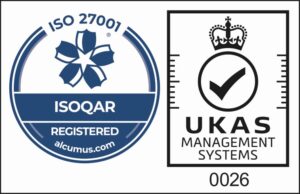Seamless Connection, Secure Collaboration: Building a Robust Remote Work Infrastructure
The surge in remote work is more than just a fleeting trend—it’s a fundamental shift in how businesses operate. But to achieve both productivity and security outside the traditional office, businesses need to invest in the right infrastructure and security protocols.
The Rise of Remote Work:
Several factors contribute to the growing popularity of remote work, including technological advancements, a quest for better work-life balance, and global events like pandemics. The shift has made clear the need for resilient IT infrastructure and heightened security measures.
Foundations of Remote Work Infrastructure:
Cloud Computing: Cloud platforms like AWS, Azure, and Google Cloud allow employees to access and share resources seamlessly, from any location.
Virtual Private Networks (VPNs): A secure VPN ensures that remote connections to company networks remain encrypted, safeguarding data transmission.
Unified Communications (UC): Solutions like Zoom, Microsoft Teams, and Slack facilitate communication, collaboration, and project management.
Security in a Remote Work Landscape:
Endpoint Protection: With employees accessing company networks from various devices, ensuring every endpoint (laptop, mobile device, etc.) is secured against threats is crucial.
Multi-Factor Authentication (MFA): An extra layer of security where users verify their identity through multiple methods before gaining access.
Regular Software Updates: Keeping all software, especially security software, updated to patch vulnerabilities.
Employee Training: Equip employees with the knowledge to identify and avoid security threats, like phishing emails.
Challenges and Solutions:
Connectivity Issues: Invest in reliable high-speed internet connections and offer subsidies or support for employees to upgrade their home networks.
Data Privacy: Use encrypted communication channels and strict data access controls to ensure sensitive information remains confidential.
Collaboration Hurdles: Implement tools that mimic in-office collaboration, like virtual whiteboards and shared documents.
Future of Remote Work and Security:
As remote work becomes more entrenched, the boundary between “office” and “home” will blur further. Companies will need to:
Adopt a Zero Trust Framework: Assume no trust by default, regardless of where access originates, and verify everything.
Incorporate AI-driven Security: Utilize AI to detect and neutralize threats in real-time.
Prioritize Mental Health: Recognize the challenges of isolation in remote work and implement strategies to support employee well-being.
Remote work offers businesses flexibility and can lead to increased productivity. However, to truly harness its benefits, companies need a robust IT infrastructure complemented by top-tier security measures. With the right strategies, businesses can enjoy the advantages of remote work without compromising on security or efficiency.




